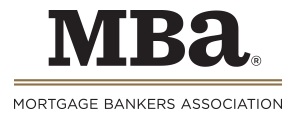Washington, DC – September 22, 2011 – (RealEstateRama) — The level of commercial/multifamily mortgage debt outstanding increased by 0.1 percent in the second quarter of 2011, the first quarterly increase since the third quarter of 2009, according to the Mortgage Bankers Association (MBA).
The $2.4 trillion in commercial/multifamily mortgage debt outstanding was $3.5 billion higher than the first quarter 2011 figure. Multifamily mortgage debt outstanding rose to $802 billion, an increase of $3.9 billion or 0.5 percent from the first quarter.
“For the first time in a year-and-a-half, new commercial and multifamily mortgage originations outpaced the paying off and paying down of existing loans,” said Jamie Woodwell, MBA’s Vice President of Commercial Real Estate Research. ”Increases in the balance of mortgages held and insured by life insurance companies, Fannie Mae, Freddie Mac and FHA outpaced declines among banks and thrifts and CMBS issues.”
The analysis summarizes the holdings of loans or, if the loans are securitized, the form of the security. For example, many life insurance companies invest both in whole loans for which they hold the mortgage note (and which appear in this data under “life insurance companies”) and in commercial mortgage-backed securities (CMBS), collateralized debt obligations (CDOs) and other asset backed securities (ABS) for which the security issues and trustees hold the note (and which appear here under CMBS, CDO and other ABS issues).
MBA recently improved its reporting of commercial and multifamily mortgage debt outstanding. The new reporting excludes two categories of loans that had formerly been included – loans for acquisition, development and construction and loans collateralized by owner-occupied commercial properties. By excluding these loan types, the analysis here more accurately reflects the balance of loans supported by office buildings, retail centers, apartment buildings and other income-producing properties that rely on rents and leases to make their payments.
Commercial banks continue to hold the largest share of commercial/multifamily mortgages, $792 billion, or 33 percent of the total.
CMBS, CDO and other ABS issues are the second largest holders of commercial/multifamily mortgages, holding $617 billion, or 26 percent of the total. Agency and GSE portfolios and MBS hold $332 billion, or 14 percent of the total, and life insurance companies hold $304 billion, or 13 percent of the total. Many life insurance companies, banks and the GSEs purchase and hold CMBS, CDO and other ABS issues. These loans appear in the CMBS, CDO and other ABS categories.
MULTIFAMILY MORTGAGE DEBT OUTSTANDING
Looking solely at multifamily mortgages, agency and GSE portfolios and MBS hold the largest share, with $332 billion or 41 percent of the total multifamily debt outstanding. They are followed by banks and thrifts with $216 billion, or 27 percent of the total. CMBS, CDO and other ABS issues hold $96 billion, or 12 percent of the total; state and local governments hold $73 billion, or 9 percent of the total; life insurance companies hold $48 billion, or 6 percent of the total; and the federal government holds $14 billion, or 2 percent of the total.
CHANGES IN COMMERCIAL/MULTIFAMILY MORTGAGE DEBT OUTSTANDING
In the second quarter of 2011, life insurance companies saw the largest increase in dollar terms in their holdings of commercial/multifamily mortgage debt – an increase of $4 billion or 1.5 percent. Agency and GSE portfolios and MBS increased their holdings of commercial/multifamily mortgages by $4 billion or one percent. Commercial banks, CMBS, CDO and other ABS issues, finance companies, the household sector and nonfinancial corporate business all decreased their holdings.
In percentage terms, REITs saw the largest increase in their holdings of commercial/multifamily mortgages, an increase of 8 percent. The household sector saw their holdings decrease 7 percent.
CHANGES IN MULTIFAMILY MORTGAGE DEBT OUTSTANDING
The $4 billion increase in multifamily mortgage debt outstanding between the first quarter and second quarter of 2011 represents a 0.5 percent increase. In dollar terms, agency and GSE portfolios and MBS saw the largest increase in their holdings of multifamily mortgage debt, an increase of $4 billion, or 1 percent. Commercial banks increased their holdings of multifamily mortgage debt by $1 billion, or 0.6 percent. Life insurance companies increased by $701 million, or 1.5 percent. CMBS, CDO, and other ABS issues saw the biggest decrease in their holdings of multifamily mortgage debt, by $1.6 billion, or 1.6 percent.
In percentage terms, life insurance companies recorded the largest increase in holdings of multifamily mortgages, at 1.5 percent. Nonfinancial corporate business saw the biggest decrease, at 59 percent.
MBA’s analysis is based on data from the Federal Reserve Board’s Flow of Funds Account of the United States and the Federal Deposit Insurance Corporation’s Quarterly Banking Profile. More information on the construction of this data series is contained in Appendix A in the report. To view the full report click here.
###
The Mortgage Bankers Association (MBA) is the national association representing the real estate finance industry, an industry that employs more than 280,000 people in virtually every community in the country. Headquartered in Washington, D.C., the association works to ensure the continued strength of the nation’s residential and commercial real estate markets; to expand homeownership and extend access to affordable housing to all Americans. MBA promotes fair and ethical lending practices and fosters professional excellence among real estate finance employees through a wide range of educational programs and a variety of publications. Its membership of over 2,200 companies includes all elements of real estate finance: mortgage companies, mortgage brokers, commercial banks, thrifts, Wall Street conduits, life insurance companies and others in the mortgage lending field. For additional information, visit MBA’s Web site: www.mortgagebankers.org.













